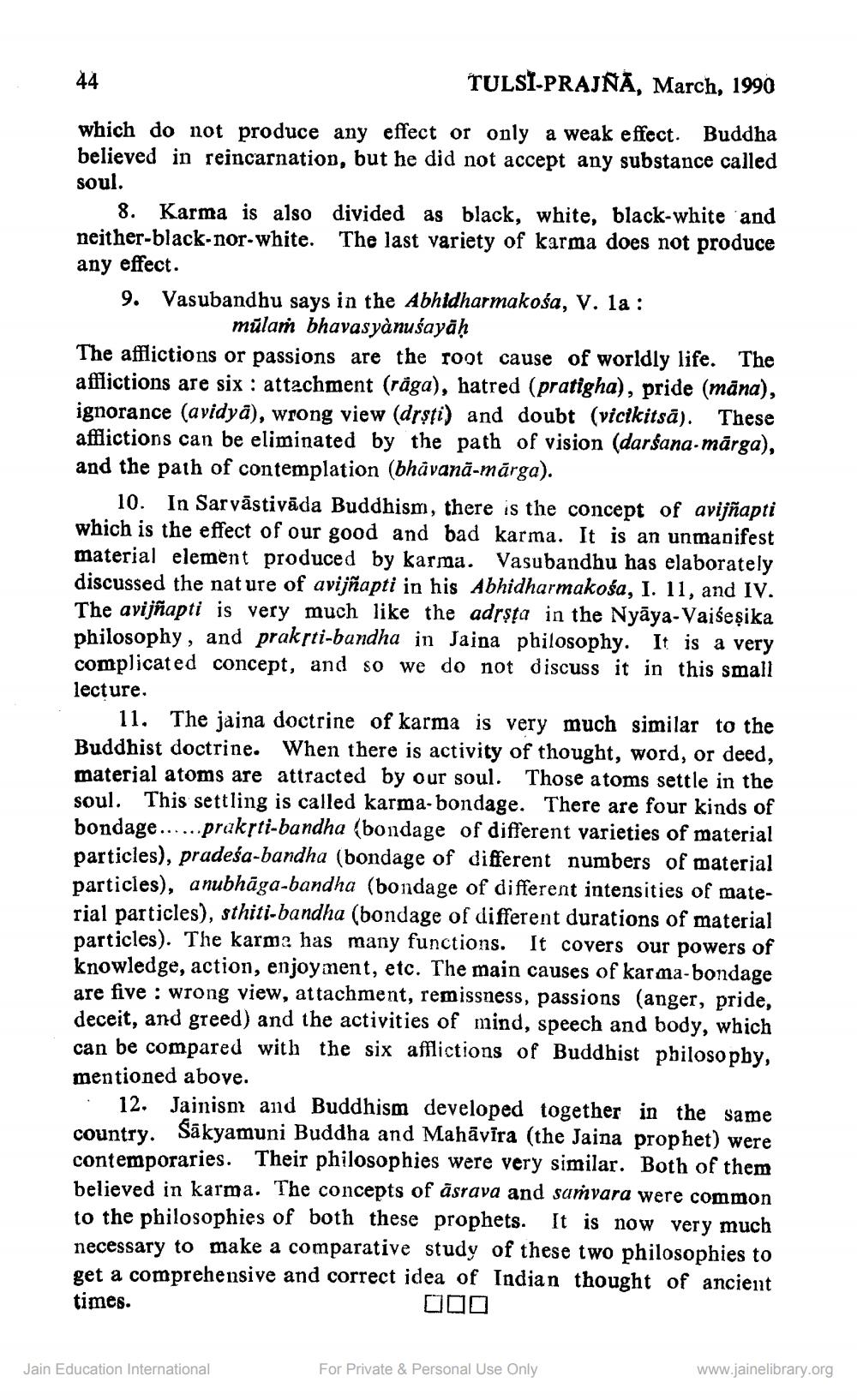________________
I.
44
TULSI-PRAJNĀ, March, 1990 which do not produce any effect or only a weak effect. Buddha believed in reincarnation, but he did not accept any substance called soul.
8. Karma is also divided as black, white, black-white and neither-black-nor-white. The last variety of karma does not produce any effect. 9. Vasubandhu says in the Abhidharmakośa, V. la :
mūlaṁ bhavasyànuśayāḥ The afflictions or passions are the root cause of worldly life. The afflictions are six : attachment (råga), hatred (pratigha), pride (māna), ignorance (avidyā), wrong view (drsti) and doubt (viclkitsā). These afflictions can be eliminated by the path of vision (darśana.mārga), and the paih of contemplation (bhāvanā-mārga).
10. In Saryāstivāda Buddhism, there is the concept of avijñapti which is the effect of our good and bad karma. It is an unmanifest material element produced by karma. Vasubandhu has elaborately discussed the nature of avijñapti in his Abhidharmakośa, I. 11, and IV. The avijñapti is very much like the adrsta in the Nyāya-Vajśeșika philosophy, and praksti-bandha in Jaina philosophy. It is a very complicated concept, and so we do not discuss it in this small lecture.
11. The jaina doctrine of karma is very much similar to the Buddhist doctrine. When there is activity of thought, word, or deed, material atoms are attracted by our soul. Those atoms settle in the soul. This settling is called karma-bondage. There are four kinds of bondage... ...praksti-bandha (bondage of different varieties of material particles), pradeśa-bandha (bondage of different numbers of material particles), anubhāga-bandha (bondage of different intensities of material particles), sthiti-bandha (bondage of different durations of material particles). The karma has many functions. It covers our powers of knowledge, action, enjoyment, etc. The main causes of karma-bondage are five : wrong view, attachment, remissness, passions (anger, pride, deceit, and greed) and the activities of mind, speech and body, which can be compared with the six afflictions of Buddhist philosophy, mentioned above.
. 12. Jainism and Buddhism developed together in the same country. Sākyamuni Buddha and Mahāvīra (the Jaina prop het) were contemporaries. Their philosophies were very similar. Both of them believed in karma. The concepts of ásrava and sumvara were common to the philosophies of both these prophets. It is now very much necessary to make a comparative study of these two philosophies to get a comprehensive and correct idea of Indian thought of ancient times.
000
For Private & Personal Use Only
Jain Education International
www.jainelibrary.org




